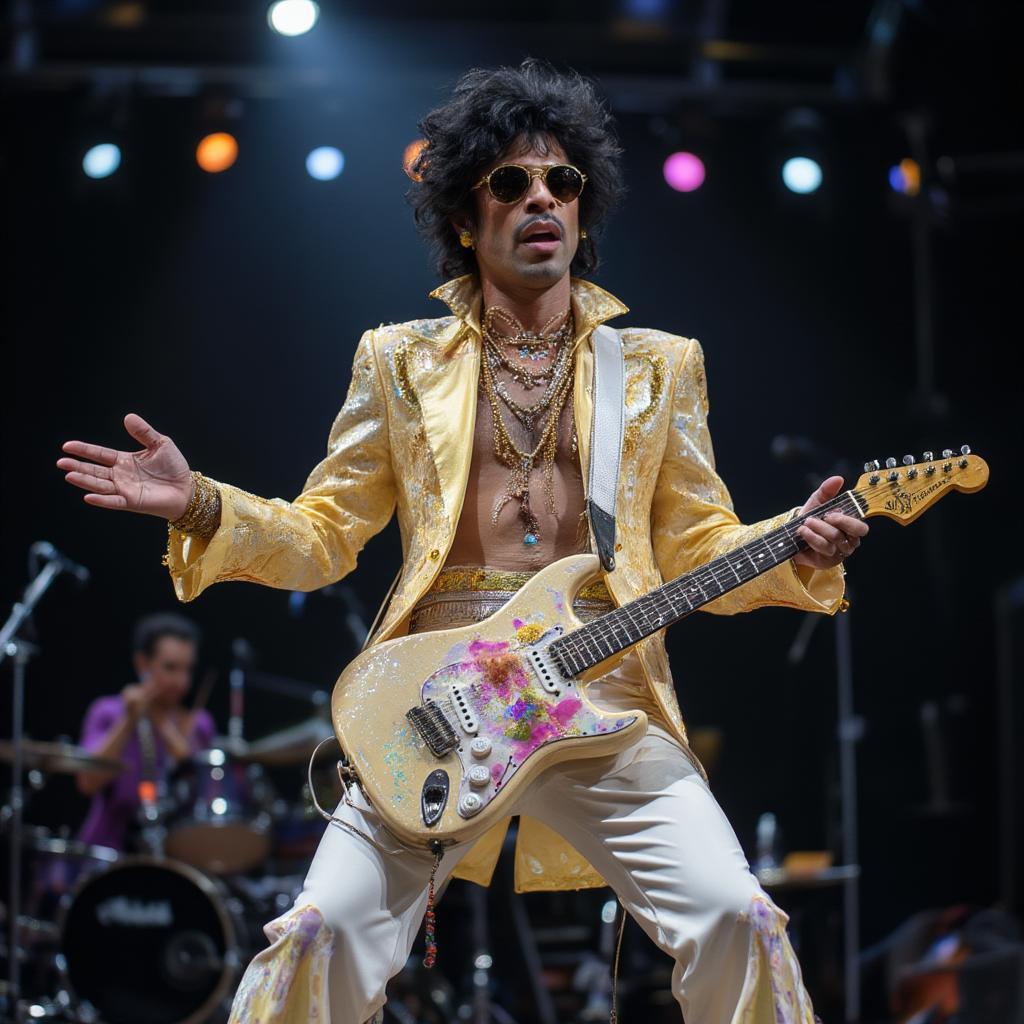Funky Chicanos: A Groove Revolution in the Barrios

Funky Chicanos represent a vibrant and influential subculture that seamlessly blends the infectious rhythms of funk music with the rich cultural heritage of the Chicano community. Originating in the barrios of the American Southwest during the late 1960s and early 1970s, this unique musical fusion reflected the socio-political climate of the era, giving voice to the struggles and aspirations of Chicano youth. This article delves into the history, key figures, and enduring legacy of Funky Chicanos, exploring their impact on music and culture.
The Rise of Funky Chicanos: A Fusion of Cultures
The emergence of Funky Chicanos was a natural progression from the Chicano Movement, a period of cultural and political activism that sought to empower Mexican Americans. Drawing inspiration from the soulful sounds of James Brown, Sly and the Family Stone, and other funk pioneers, Chicano musicians infused these rhythms with traditional Latin influences, creating a sound that was both familiar and distinctly their own. This fusion resonated with a generation seeking to express their identity and experiences through music. Instruments like the congas, timbales, and güiro were often incorporated, adding a distinctly Latin flavor to the already potent funk groove. This cultural blend extended beyond the music itself, influencing fashion, language, and artistic expression within the Chicano community.
Key Influences and Pioneers of the Funky Chicano Sound
Several bands and artists played a pivotal role in shaping the Funky Chicano sound. Groups like War, with their multi-ethnic lineup and hits like “Low Rider” and “The World Is a Ghetto,” became synonymous with the movement. Other notable acts included Tierra, whose smooth vocals and Latin-tinged funk earned them widespread acclaim, and El Chicano, known for their powerful horn section and socially conscious lyrics. These pioneers not only created groundbreaking music but also paved the way for future generations of Chicano artists. Their influence can still be heard in contemporary music, demonstrating the lasting impact of their contributions.
Funky Chicano Soul: More Than Just a Groove
Funky Chicano music went beyond entertainment; it served as a powerful platform for social commentary. Lyrics often addressed issues such as poverty, discrimination, and police brutality, reflecting the realities of life in the barrios. Songs like War’s “Cisco Kid,” which tells the tale of a young man caught in the cycle of poverty and crime, exemplified this social consciousness. The music provided a voice for the voiceless and became an anthem for a generation seeking change. It also fostered a sense of community and pride among Chicanos, strengthening their cultural identity.
The Enduring Legacy: Funky Chicanos in the 21st Century
The influence of Funky Chicanos continues to resonate in contemporary music. Artists like Ozomatli, Quetzal, and Chicano Batman carry the torch, blending traditional sounds with modern influences to create a new generation of Funky Chicano music. Their music addresses contemporary issues while staying true to the spirit of the movement’s pioneers. This continued evolution ensures that the legacy of Funky Chicanos remains vibrant and relevant in the 21st century. The genre has transcended its origins, inspiring musicians across various genres and cultures.

The Chicano Movement and its Musical Expression: Funk as a Tool for Empowerment
The Chicano Movement provided fertile ground for the development of Funky Chicano music. The movement’s emphasis on cultural pride and self-determination resonated deeply with musicians who sought to express their experiences through their art. Funk, with its raw energy and improvisational nature, provided the perfect vehicle for this expression. It allowed for a fusion of musical styles and traditions, reflecting the multifaceted nature of the Chicano identity. This connection between music and social activism remains a defining characteristic of the genre.
Funky Chicanos and Lowrider Culture: A Symbiotic Relationship
Funky Chicano music became intrinsically linked to lowrider culture, another prominent expression of Chicano identity. Lowriders, customized cars with lowered suspensions and elaborate paint jobs, became rolling symbols of cultural pride. Cruising became a social ritual, with Funky Chicano music providing the soundtrack. This symbiotic relationship further solidified the music’s place within the Chicano community. The shared aesthetic of vibrant colors, intricate details, and soulful expression unified the two cultural phenomena.
Conclusion: The Funky Chicano Groove Lives On
Funky Chicanos represent a powerful fusion of musical and cultural influences. From their roots in the Chicano Movement to their enduring legacy in contemporary music, Funky Chicanos have made an indelible mark on American culture. Their music continues to inspire and uplift, carrying the message of cultural pride and social justice to new generations. The Funky Chicano sound remains a testament to the power of music to unite, empower, and express the experiences of a community. Their innovative blend of funk and Latin rhythms continues to resonate with audiences worldwide, ensuring that the Funky Chicano groove lives on.
FAQ: Funky Chicanos
-
What is Funky Chicano music? Funky Chicano music blends funk with Latin rhythms and often addresses social issues relevant to the Chicano community.
-
Who are some prominent Funky Chicano artists? War, Tierra, El Chicano, Ozomatli, Quetzal, and Chicano Batman are notable examples.
-
How is Funky Chicano music connected to the Chicano Movement? The music served as a platform for social commentary and cultural expression during the movement.
-
What is the relationship between Funky Chicanos and lowrider culture? The music became the soundtrack to lowrider cruising, solidifying its cultural significance.
-
Is Funky Chicano music still relevant today? Yes, contemporary artists continue to evolve the genre, ensuring its enduring legacy.
-
What are some key characteristics of Funky Chicano music? It often features Latin percussion, soulful vocals, and socially conscious lyrics.
-
Where did Funky Chicano music originate? It originated in the barrios of the American Southwest.
-
How did funk music influence Chicano artists? Funk provided a framework for Chicano artists to express their unique cultural experiences.
-
Where can I listen to Funky Chicano music? Streaming platforms, online music stores, and vinyl record shops are good places to start.




